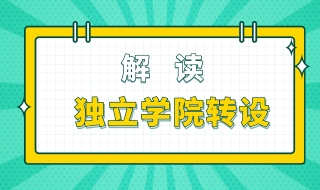点击下载试题:2018年普通高等学校招生全国统一考试英语(北京卷)
第一部分:知识运用(共两节,45分)
第一节单项填空(共15小题;每小题1分,共15分)
从每题所给的A、B、C、D四个选中,选出可以填入空白处的最佳选项,
并在答题卡上:将该项涂黑。
例: it's so nice to hear from her again__,we last met more than thirty yearsago.
A. what's more
B. That’s to say
C. In other words
D. Believe it or not
答案是D。
1. -Hi, I'm Peter. Are you new here? I haven't seen you around?
-Hello, Peter. I'm Bob. I just__on Monday.
A. start
B. have started
C. started
D. had started
2. __we don't stop climate change, many animals and plants in the worldwill be gone.
A. Although
B. While
C. If
D. Until
3. __along the old Silk Road is an interesting and rewarding experience
A. Travel
B. Traveling
C. Having traveled
D. Traveled
4. Susan had quit her well-paid job and __as a volunteer in theneighborhood. when I visited her last year
A. is working
B. was working
C. has worked
D. had worked
5. She and her family bicycle to work, helps them keep fit
A. which
B. who
C.as
D. that
6. During the Mid-Autumn Festival, family members often gather together__ameal, admire the moon and enjoy moon cakes.
A. share
B. to share
C. having shared
D. shared
7. China's high-speed railways from 9,000 to 25,000 kilometers in thepastfew years.
A. are growing
B. have grown
C. will grow
D. had grown
8. In any unsafe situation, simply__the button and a highly-trained agentwill get you the help you need.
A. press
B. to press
C. pressing
D. pressed
9. A rescue worker risked his life saving two tourists who__in themountains for two days.
A. are trapping
B. have been trapped
C. were trapping
D. had been trapped
10. Ordinary soap, __correctly, can deal with bacteria effectively.
A. used
B. to use
C. using
D. use
11. Without his support, we wouldn't be__we are now.
A. how
B. when
C. where
D. why
12. In today's information age, the loss of data__cause serious problemsfor a company.
A. need
B. should
C. can
D. must
13. They might have found a better hotel if they__a few morekilometers.
A. drove
B. would drive
C. were to drive
D. had driven
14.-Good morning, Mr. lee's office.
-Good morning. I'd like to make an appointment__next Wednesdayafternoon.
A. for
B. on
C. in
D. at
15. This is__my father has taught me-to always face difficulties and hopefor the best.
A. how
B. which
C. the
D. what
第二节完形填空(共20小题;每小题1.5分,共30分)
阅读下面短文,掌握其大意,从每题所给的A、B、C、D四个选项中,选出最佳选项,并在答题卡上将该项涂黑。
The Homeless Hero
For many,finding an unattended wallet filled with £400 in cash would be asource(来源)of temptation(诱惑).But the 16 would no doubt be greater if you wereliving on the streets with little food and money. All of this makes the actionsof the homeless Tom Smith 17 more remarkable.
After spotting a 18 on the front seat inside a parked car with its windowdown,he stood guard in the rain for about two hours waiting for the 19 toreturn.
After hours in the cold and wet, he 20 inside and pulled the wallet outhoping to find some ID so he could contact(联系)the driver, only to 21 itcontained £400 in notes,with another £50 in spare change beside it.
He then took the wallet to a nearby police station after 22 a note behindto let the owner know it was safe. When the car’s owner John Anderson and hiscolleague Carol Lawrence returned to the car-which was itself worth £35,000—inGlasgow city centre, they were 23 to find two policemen standing next to it. Thepolicemen told them what Mr. Smith did and that the wallet was 24 .
The pair were later able to thank Mr. Smith for his 25 .
Mr. Anderson said:“"I couldn’t believe that the guy never took a penny. Tothink he is sleeping on the streets tonight 26 he could have stolen the moneyand paid for a place to stay in. This guy has nothing and 27 he didn't take thewallet for himself;he thought about others 28 it’s unbelievable. It just provesthere are 29 guys out there.”
Mr. smith’s act 30 much of the public’s attention. He also won praise fromsocial media users after Mr. Anderson 31 about the act of kindness onFacebook.
Now Mr. Anderson has set up an online campaign to 32 money for
Mr. Smith and other homeless people in the area, which by yesterday hadreceived £8,000. “I think the faith that everyone has shown 33 him has touchedhim. People have been approaching him in the street; he's ha I job 34 and allsorts, ”Mr. Anderson commented.
For Mr. Smith, this is a possible life-changing 35 . The story once againtells us that one good turn deserves another.
16.
A. hope
B. aim
C. urge
D. effort
17.
A. still
B. even
C. ever
D. once
18.
A. wallet
B. bag
C. box
D. parcel
19.
A. partner
B. colleague
C. owner
D. policeman
20.
A. turned
B. hid
C. stepped
D. reached
21.
A. discover
B. collect
C. check
D. believe
22.
A. taking
B. leaving
C. reading
D. writing
23.
A. satisfied
B. excited
C. amused
D. shocked
24.
A. safe
B. missing
C. found
D. seen
25.
A. service
B. support
C. kindness
D. encouragement
26.
A. when
B. if
C. where
D. because
27.
A. rather
B. yet
C. already
D. just
28.
A. too
B. though
C. again
D. instead
29.
A. honest
B. polite
C. rich
D. generous
30.
A. gave
B. paid
C. cast
D. drew
31.
A. learned
B. posted
C. cared
D. heard
32.
A. borrow
B. raise
C. save
D. earn
33.
A. of
B. at
C. for
D. in
34.
A. details
B. changes
C. offers
D. applications
35.
A. lesson
B. adventure
C. chance
D. challenge
第二部分:阅读理解(共两节,40分)
第一节(共15小题:每小题2分,共30分)
阅读下列短文,从每题所给的A、B、C、D四个选项中,选出最仁选项,并
在答题卡上将该项涂黑。
A
My First Marathon(马拉松)
A month before my first marathon, one of my ankles was injured and thismeant not running for two weeks, leaving me only two weeks to train. Yet, I wasdetermined to go ahead.
I remember back to my 7th year in school. In my first P.E. class, theteacher required us to run laps and then hit a softball. I didn't do eitherwell. He later informed me that I was“ not athletic”.
The idea that I was "not athletic" stuck with me for years. When I startedrunning in my 30s,I realized running was a battle against myself, not aboutcompetition or whether or not I was athletic. It was all about the battleagainst my own body and mind. A test of wills!
The night before my marathon, I dreamt that I couldn't even find the finishline. I woke up sweating and nervous, but ready to prove something tomyself.
Shortly after crossing the start line, my shoe laces (鞋带)became untied. SoI stopped to readjust. Not the start I wanted!
At mile3, I passed a sign:“ GO FOR IT, RUNNERS!”
By mile 17, I became out of breath and the once injured ankle hurt badly.Despite the pain, I stayed the course walking a bit and then running again.
By mile 21, I was starving!
As I approached mile 23, I could see my wife waving a sign. She is mybiggest fan. She never minded the alarm clock sounding at 4 a.m. or questionedmy expenses on running.
I was one of the final runners to finish. But I finished! And I got amedal. In fact, I got the same medal as the one that the guy who came in firstplace had.
Determined to be myself,, move forward, free of shame and worldlylabels(世俗标签), I can now call myself a "marathon winner”.
36. A month before the marathon, the author .
A. was well trained
B. felt scared
C. made up his mind to run
D. Lost hope
37. Why did the author mention the P.E. class in his 7th year?
A. To acknowledge the support of his teacher.
B. To amuse the readers with a funny story.
C. To show he was not talented in sports.
D. To share a precious memory.
38. How was the author's first marathon?
A. He made it.
B. He quit halfway.
C. He got the first prize.
D. He walked to the end.
39. What does the story mainly tell us?
A. A man owes his success to his family support.
B. A winner is one with a great effort of will.
C. Failure is the mother of success.
D. One is never too old to learn.
B
Find Your Adventure at the Space and Aviation (航空)Center
If you're looking for a unique adventure, the Space and AviationCenter(SAC)is the place to be. The Center offers programs designed to challengeand inspire with hands-on tasks and lots of fun.
More than 750,000 have graduated from SAC, with many seeking employment inengineering, aviation, education, medicine and a wide variety of otherprofessions. They come to camp, wanting to know what it is like to be anastronaut or a pilot, and they leave with real-world applications for whatthey're studying in the classroom.
For the trainees,the programs also offer a great way
to earn merit badges(荣誉徽章). At Space Camp, trainees can earn their SpaceExploration badge as they build and fire model rockets, learn about space tasksand try simulated (模拟) flying to space with the crew from all over the world.The Aviation Challenge program gives trainees the chance to earn their Aviationbadge. They learn the principles of flight and test their operating skills inthe cockpit(驾驶舱)of a variety of flight simulators. Trainees also get a goodstart on their Wilderness Survival badge as they learn about water-and
land-survival through designed tasks and their search and rescue of“downed" pilot.
With all the programs, teamwork is key as trainees learn the importance ofleadership and being part of a bigger task.
All this fun is available for ages 9 to 18. Families can enjoy theexperience together, too, with Family Camp programs for families with childrenas young as 7.
Stay an hour or stay a week--there is something here for everyone!
For more details,please visit us online at www.oursac.com.
40. Why do people come to SAC?
A. To experience adventures.
B. To look for jobs in aviation.
C. To get a degree in engineering.
D. To learn more about medicine.
41. To earn a Space Exploration badge, a trainee needs to .
A. fly to space.
B. get an Aviation badge first.
C. study the principles of flight.
D. build and fire model rockets.
42. What is the most important for trainees?
A. Leadership.
B. Team spirit.
C. Task planning.
D. Survival skills.
C
Plastic-Eating Worms
Humans produce more than 300 milliontons of plastic every year. Almost half of that winds up in landfills(垃圾填埋场),and up to 12 million tons pollute the oceans. qSo far there is no effective wayto get rid of it, but a new study suggests an answer may lie in the stomachs ofsome hungry worms.
Researchers in Spain and England recently found that the worms of thegreater wax moth can break down polyethylene, which accounts for 40% ofplastics. The team left 100 wax worms on a commercial polyethylene shopping bagfor 12 hours, and the worms consumed and broke down about 92 milligrams, oralmost 3% of it. To confirm that the worms' chewing alone was not responsiblefor the polyethylene breakdown, the
researchers made some worms into paste(糊状物) and applied it to plasticfilms. 14 hours later the films had lost 13% of their mass--apparently brokendown by enzymes(酶)from the worms' stomachs. Their findings were published inCurrent Biology in 2017.
Federica Bertocchini, co-author of the study, says the worms' ability tobreak down their everyday food-beeswax--also allows them to break down plastic"Wax is a complex mixture, but the basic bond in polyethylene, the carbon-carbonbond, is there
as well, "she explains. "The wax worm evolved a method or system to breakthis bond. "
Jennifer Debruyn, a microbiologist at the University of Tennessee, who wasnot involved in the study, says it is not surprising that such worms can breakdown polyethylene. But compared with previous studies, she finds the speed ofbreaking down in this one exciting. The next step, DeBruyn says, will be toidentify the cause of the breakdown. Is it an enzyme produced by the worm itselfor by its gut microbes(肠道微生物)?
Bertocchini agrees and hopes her team’s findings might one day help employthe enzyme to break down plastics in landfills. But she expects using thechemical in some kind of industrial process-not simply "millions of worms thrownon top of the plastic.”
43. What can we learn about the worms in the study?
A. They take plastics as their everyday food.
B. They are newly evolved creatures.
C. They can consume plastics.
D. They wind up in landfills.
44. According to Jennifer DeBruyn, the next step of the study is to .
A. identify other means of the breakdown
B. find out the source of the enzyme
C. confirm the research findings
D. increase the breakdown speed
45. It can be inferred from the last paragraph that the chemical might.
A. help to raise worms
B. help make plastic bags
C. be used to clean the oceans
D. be produced in factories in future
46. What is the main purpose of the passage?
A. To explain a study method on worms.
B. To introduce the diet of a special worm.
C. To present a way to break down plastics.
D. To propose new means to keep eco-balance.
D
Preparing Cities for Robot Cars
The possibility of self-driving robot cars has often seemed like afuturist's dream, years away from materializing in the real world. Well, thefuture is apparently now. The California Department of Motor Vehicles begangiving permits in April for companies to test truly self-driving cars on publicroads. The state also cleared the way for companies to sell or rent outself-driving cars, and for companies to operate driverless taxi services.California, it should be noted, isn't leading the way here. Companies have beentesting their vehicles in cities across the country. It's hard to predictwhen
driverless cars will be everywhere on our roads. But however long it takes,the technology has the potential to change our transportation systems and ourcities, for better or for worse, depending on how the transformation isregulated.
While much of the debate so far has been focused on the safety ofdriverless cars(and rightfully so), policymakers also should be talking abouthow self-driving vehicles can help reduce traffic jams, cut emissions(排放) andoffer more convenient, affordable
mobility options. The arrival of driverless vehicles is a chance to makesure that those vehicles are environmentally friendly and more shared.
Do we want to copy- or even worsen- the traffic of today with driverlesscars? Imagine a future where most adults own individual self-driving vehicles.They tolerate long, slow journeys to and from work on packed highways becausethey can work, entertain themselves or sleep on the ride, which encourages urbanspread. They take their driverless car to an appointment and set the emptyvehicle to circle the building to avoid paying for parking. Instead of walking afew blocks to pick up a child or the dry cleaning, they send the self-drivingminibus. The convenience even leads fewer people to take public transport——anunwelcome side effect researchers have already found in ride- hailing(叫车)services.
A study from the University of California at Davis suggested that replacingpetrol-powered private cars worldwide with electric, self-driving and sharedsystems could reduce carbon emissions from transportation 80% and cut the costof transportation infrastructure
(基础设施) and operations40%by2050. Fewer emissions and cheaper travel soundpretty appealing. The first commercially available driverless cars will almostcertainly be fielded by ride-hailing services, considering the cost ofself-driving technology as well as liability and maintenance issues(责任与维护问题).Butdriverless car ownership could increase as the prices drop and more peoplebecome comfortable with the technology.
Policymakers should start thinking now about how to make sure theappearance of driverless vehicles doesn't extend the worst aspects of thecar-controlled transportation system we have today. The coming technologicaladvancement presents a chance for cities and states to develop transportationsystems designed to move more people,and
more affordably. The car of the future is coming. We just have to plan forit.
47. According to the author,attention should be paid to how driverless carscan__________.
A. help deal with transportation-related problems
B. provide better services to customers
C. cause damage to our environment
D. make some people lose jobs
48. As for driverless cars,what is the author's major concern?
A. Safety.
B. Side effects.
C. Affordability.
D. Management.
49. What does the underlined word “fielded” in Paragraph 4 probablymean?
A. Employed.
B. Replaced.
C. Shared.
D. Reduced.
50. What is the author's attitude to the future of self-driving cars?
A. Doubtful.
B. Positive.
C. Disapproving.
D. Sympathetic
第二节(共5小题;每小题2分,共10分)
根据短文内容,从短文后的七个选项中选出能填入空白处的最佳选项。选项中有两项为多余选项。
Why Do We Get Angry?
Anger seems simple when we are feeling it, but the causes of anger arevarious. Knowing these causes can make us examine our behavior,and correct badhabits. The main reasons we get angry are triggering(触发)events,personalitytraits(特征),and our assessment of situations. 51
Triggering events for anger are so many that to describe them all wouldtake hundreds of pages. However, here are some examples: being cut off intraffic, a deadline approaching, experiencing physical pain, and much more._52The reason why someone is triggered by something and others are not is often dueto one's personal history and psychological traits.
Each person. no matter who they are, has psychological imbalances. Peoplewho have personality traits that conncct with competitiveness and low upsettolerance are much more likely to get angry. 53 Also, sometimes pre-anger doesnot have to do with a lasting condition, but rather a temporary state before atriggering event has occurred.
____54 Sometimes even routine occurrences become sources of pre-anger, oranger itself. Sometimes ignorance and negative (消极的)outlooks on situations cancreate anger.
____55 However, anger can easily turn violent, and it is best to know thereasons for anger to appear in order to prevent its presence. With these mainreasons in mind, we can evaluate our level of anger throughout the day andprevent cases of outbursts by comprehending the reasons for our feelings.
A. Our attitude and viewpoint on situations can create anger within us aswell.
B. But some types of situations can help us to get rid of the occurrence ofanger.
C. Anger is rarely looked upon as a beneficial character trait, and isusually advised to reduce it.
D. Anger is a particularly strong feeling and maybe people think that theyhave reasons to feel angry.
E. Having these personality traits implies the pre-anger state, where angeris in the background of your mind.
F. Understanding these reasons will control our own anger if we are willingto evaluate ourselves with a critical eye.
G. Not everyone acts the same in response to events, and that is why whattriggers one person may or may not trigger another.
第三部分:书面表达(共两节,35分)
第一节(15分)
假设你是红星中学高三学生李华,你的英国朋友Jim在给你的邮件中提到他
对中国文化感兴趣,计划明年来北京上大学。他向你咨询相关信息。请给他回邮件,内容包括:
1.表示欢迎;
2.推荐他上哪所大学;
3.建议他做哪些准备工作。
注意:1.词数不少于50;
2.开头和结尾已给出,不计入总词数。
Dear Jim,
___________________________________________________________________________________________________________________________________________________________________________________________________
Yours
Li Hua
(请务必将作文写在答题卡指定区域内)
第二节(20分)
假设你是红星中学高三学生李华,请根据以下四幅图的先后顺序,写一篇英
文周记,记述你们上周接待外国学生,带领他们体验中国茶文化的全过程。
注意:词数不少于60。
① 凡本站注明“稿件来源:教育在线”的所有文字、图片和音视频稿件,版权均属本网所有,任何媒体、网站或个人未经本网协议授权不得转载、链接、转贴或以其他方式复制发表。已经本站协议授权的媒体、网站,在下载使用时必须注明“稿件来源:教育在线”,违者本站将依法追究责任。
② 本站注明稿件来源为其他媒体的文/图等稿件均为转载稿,本站转载出于非商业性的教育和科研之目的,并不意味着赞同其观点或证实其内容的真实性。如转载稿涉及版权等问题,请作者在两周内速来电或来函联系。
 推荐高校
推荐高校
推荐学校
- 安徽电气工程学校
- 合肥市经贸旅游学校
- 广西华侨学校
- 南宁市第六职业技术学校
- 宾阳县职业技术学校
- 贵港市民族职业技术学校
- 容县职业中等专业学校
- 环江毛南族自治县职业技术学校
- 贵阳经济技术学校
- 黔西市中等职业学校
- 海南省工业学校
- 海南省商业学校
- 海南省经济技术学校
- 海南省机电工程学校
- 海南省华侨商业学校
- 海南省银行学校
- 海南省农垦海口中等专业学校
- 海南省交通学校
- 海南省海口旅游职业学校
- 文昌市中等职业技术学校
- 海口华健幼师职业学校
- 石家庄同创铁路运输学校
- 武汉市第二轻工业学校
- 武汉市仪表电子学校
- 武汉市黄陂区职业技术学校
- 武汉助产学校
- 湖北现代科技学校
- 哈尔滨航运学校
- 哈尔滨市现代服务中等职业技术学校
- 哈尔滨市航空服务中等专业学校
- 哈尔滨市龙江旅游中等职业技术学校
- 黑龙江医药卫生学校
- 哈尔滨市铁乘中等专业学校
- 黑龙江省林业卫生学校
- 南昌工业工程学校
- 南昌市第一中等专业学校
- 信丰中等专业学校
- 井冈山市旅游中等专业学校
- 沈阳现代制造服务学校
- 沈阳市信息工程学校
- 沈阳市旅游学校
- 临沂新世纪职业中等专业学校
- 临沂兴华职业中等专业学校
- 山东省临沂卫生学校
- 潍坊豪迈科技职业中等专业学校
- 潍坊弘景中医药学校
- 陕西省商业学校
- 西安交通职业学校
- 韩城市职业中等专业学校
- 上海信息技术学校
- 上海市建筑工程学校
- 上海港湾学校
- 四川省食品药品学校
- 四川省乐山市竹根职业中专学校
- 乐山市计算机学校
- 重庆市经贸中等专业学校
- 重庆市渝中职业教育中心
- 重庆市旅游学校
- 重庆市立信职业教育中心
- 重庆市九龙坡职业教育中心
- 重庆市育才职业教育中心
- 重庆市涪陵区职业教育中心
- 重庆市黔江区民族职业教育中心
- 重庆市大足职业教育中心
- 重庆市轻工业学校
- 四川仪表工业学校
- 重庆市江南职业学校
- 重庆市医药学校
- 重庆财政学校
- 重庆市梁平职业技术学校
- 重庆市涪陵信息技术学校
- 丽江民族中等专业学校
- 长治市超越学校
- 沈阳市汽车工程学校
- 临沂电力学校
- 临沂市工业学校
- 合肥工业学校
- 台山市敬修职业技术学校
- 上海市工艺美术学校
- 重庆中意职业技术学校
- 重庆万州商贸中等专业学校
- 重庆市涪陵创新计算机学校
- 重庆铁路运输技师学院
- 重庆市武隆区职业教育中心
- 四川省质量技术监督学校
- 新安县职业高级中学
- 黑龙江省贸易经济学校
- 黄麓师范学校
- 江西省医药学校
- 江西省信息科技学校
- 江西省建筑工业学校
- 江西省化学工业学校
- 江西省民政学校
- 九江市理工职业技术学校
- 九江庐山西海艺术学校
- 赣州应用技术职业学校
- 南康区电子工业技术学校
- 赣州旅游职业学校
- 吉安应用工程学校
- 吉安市特殊教育学校
- 上饶市信州理工学校
- 武汉市第一职业教育中心
- 海南省财税学校
- 海南旅游经济贸易学校
- 海南南方民族艺术学校
- 海南省万宁市职业技术学校
- 海南珠江源高级职业技术学校
- 海南职业外语旅游学校
- 海南城市职业技术学校
- 西安现代职业高中
- 广州市信息技术职业学校
- 广州市旅游商务职业学校
- 广州市幼儿师范学校
- 广州市交通运输职业学校
- 广州市财经商贸职业学校
- 广州市司法职业学校
- 广州市医药职业学校
- 广州市轻工职业学校
- 广州市纺织服装职业学校
- 广州市侨光财经职业技术学校
- 广州市黄埔职业技术学校
- 广州市番禺区职业技术学校
- 广州市花都区理工职业技术学校
- 广州市增城区职业技术学校
- 广州市增城区卫生职业技术学校
- 广州市增城区东方职业技术学校
- 广州市南沙区岭东职业技术学校
- 珠海市新思维中等职业学校
- 江门市工贸职业技术学校
- 江门雅图仕职业技术学校
- 开平市机电中等职业技术学校
- 广州市贸易职业高级中学
- 广州市海珠工艺美术职业学校
- 广州市从化区职业技术学校
- 台山市培英职业技术学校
- 开平市吴汉良理工学校
- 鹤山市职业技术学校
- 恩平市中等职业技术学校
- 成都广信数字技术职业学校
- 重庆市开州区巨龙中等职业技术学校
- 重庆市梁平职业教育中心
- 重庆市永川职业教育中心
- 重庆市龙门浩职业中学校
- 重庆市女子职业高级中学
- 重庆工商学校
- 海南省旅游学校
- 东方市职业技术学校
- 陵水黎族自治县职业中等专业学校
- 临高县中等职业技术学校
- 新余市职业教育中心(新余技师学院)
- 会昌中等专业学校
- 南康中等专业学校
- 上犹中等专业学校
- 赣州市赣县中等专业学校
- 龙南中等专业学校
- 上高中等专业学校
- 玉山中等专业学校
- 永新中等专业学校
- 东乡机电中等专业学校
- 嫩江市职业技术教育中心学校
- 沈阳市艺术幼儿师范学校
- 江西工程学校
- 瑞金中等专业学校
- 丰城中等专业学校
- 德兴市职业中专学校
- 儋州市中等职业技术学校
- 海南省农林科技学校
- 海南省民族技工学校
- 海南省文化艺术学校
- 海南省第二卫生学校
- 重庆市护士学校
- 重庆市体育运动学校
- 重庆市渝东卫生学校
- 贵州省交通运输学校
- 南昌汽车机电学校
- 江西九江科技中等专业学校
- 石家庄装备制造学校
- 广西银行学校
- 佛山市顺德区中等专业学校
- 武汉市第二职业教育中心学校
- 重庆市三峡水利电力学校
- 重庆市农业学校
- 重庆艺术学校
- 海南(海口)特殊教育学校
- 榆次区职业技术学校
- 阜阳卫生学校
- 德安县中等职业技术学校
- 分宜县职业技术学校
- 江西省冶金工业学校
- 石城县职业技术学校
- 永丰县职业中等专业学校
- 黎川县职业中等专业学校
- 海南省农业广播电视学校
- 黔西市水西中等职业学校
- 海南雅典职业技术学校
- 海南省民航职业学校
- 浙江医药技术学校
- 南昌铁路保安中等专业学校
- 江西泛美艺术中等专业学校
- 三亚海洋职业技术学校
- 海口经济学院附属艺术学校
- 海南立有美术职业技术学校
- 重庆市南丁卫生职业学校
- 重庆市万州电子信息工程学校
- 成都核瑞工程职业技术学校
- 南昌向远轨道技术学校
- 赣北电子工业学校
- 广州市城市建设职业学校
- 永济市职业中专学校
- 樟树市职业技术学校
- 海南省农业学校(海南省科技学校)
- 佛山市顺德区北滘职业技术学校
- 佛山市顺德区陈登职业技术学校
- 江门市第一职业高级中学
- 江门市新会机电职业技术学校
- 广州市荔湾区外语职业高级中学
- 江西省交通运输学校
- 江西省建设工程学校
- 江西省通用技术工程学校
- 江西省轻工业科技中等专业学校
- 南昌市进贤县职业技术高级中学
- 重庆市万州现代信息工程学校
- 重庆市合川教师进修学校
- 重庆市巫山县职业教育中心
- 重庆市云阳职业教育中心
- 重庆市奉节职业教育中心
- 重庆市丰都县职业教育中心
- 重庆市巫溪县职业教育中心
- 重庆市北碚职业教育中心
- 重庆市商务学校
- 重庆市开州区职业教育中心
- 重庆市垫江县职业教育中心
- 重庆市工艺美术学校
- 重庆市垫江县第一职业中学校
- 秀山土家族苗族自治县职业教育中心
- 重庆工业管理职业学校
- 重庆市两江职业教育中心
- 重庆市万盛职业教育中心
- 重庆市潼南职业教育中心
- 重庆光华女子职业中等专业学校
- 重庆市铜梁职业教育中心
- 重庆市璧山职业教育中心
- 重庆市涪陵第一职业中学校
- 重庆市城口县职业教育中心
- 重庆市酉阳职业教育中心
- 彭水苗族土家族自治县职业教育中心
- 重庆市綦江职业教育中心
- 重庆市忠县职业教育中心
- 共青中医药学校
- 九江市柴桑区中等职业技术学校
- 大余县职业中等专业学校
- 余干县英才职业学校
- 江西省遂川县职业中学
- 抚州信息工程学校
- 赣州市军科职业技术学校
- 上饶市信赖工艺美术学校
- 赣州现代科技职业学校
- 贵阳职业技术学院
- 密山市职业技术教育中心学校
- 黑龙江旅游职业技术学院
- 黑龙江林业职业技术学院
- 广州市电子商务技工学校
- 安徽省徽州师范学校
- 安徽建设学校
- 都江堰市职业中学
- 巴中职业技术学院
- 红河州特殊教育中等专业学校
- 黑龙江省伊春卫生学校
- 陕西省泾阳职业中等专业学校
- 武汉华中艺术学校
- 武汉市工业科技学校
- 武汉长江职业中等专业学校
- 孝感思创信息科技学校
- 日照市技师学院
- 青岛市技师学院
- 重庆市交通高级技工学校
- 重庆交通运输高级技工学校
- 重庆市工业技师学院
- 重庆市聚英技工学校
- 重庆市城市建设高级技工学校
- 重庆能源工业技师学院
- 共青技工学校
- 江西文理技师学院
- 成都职业技术学校
- 大庆技师学院
- 南昌华中技工学校
- 共青铁路工程技工学校
- 于都新长征技工学校
- 南昌当代艺术学校
- 重庆市万州职业教育中心
- 江西上饶东南智慧技工学校
- 江西省石油技工学校
- 广西工贸高级技工学校
- 宜春市技术工人学校
- 东乡高级技工学校
- 江西新余南铁技工学校
- 广州城建技工学校
- 重庆市艺才高级技工学校
- 上饶信工技工学校
- 淮南世际艺术学校
- 合肥竹稞技工学校
- 合肥高科经济技工学校
- 杭州市第二机械技工学校
- 上海南湖职业技术学院(中职部)
- 上海震旦职业学院有限公司(中职部)
- 上海电子信息职业技术学院(中职部)
- 上海交通职业技术学院(中职部)
- 上海农林职业技术学院(中职部)
- 成都市技师学院
- 四川核工业技师学院
- 哈尔滨铁道技师学院
- 海南省技师学院
- 海南省三亚技师学院
- 海南新东方烹饪高级技工学校
- 海南食品药品技工学校
- 洋浦经济开发区高级技工学校
- 台山市联合职业技术学校
- 上海科创职业技术学院(中职部)
- 上海现代化工职业学院(中职部)
- 上海建设管理职业技术学院(中职部)
- 南昌市望成技工学校
- 海南丽波技工学校
- 海南省交通高级技工学校
- 西安西京职业高级中学






 教育在线
教育在线








